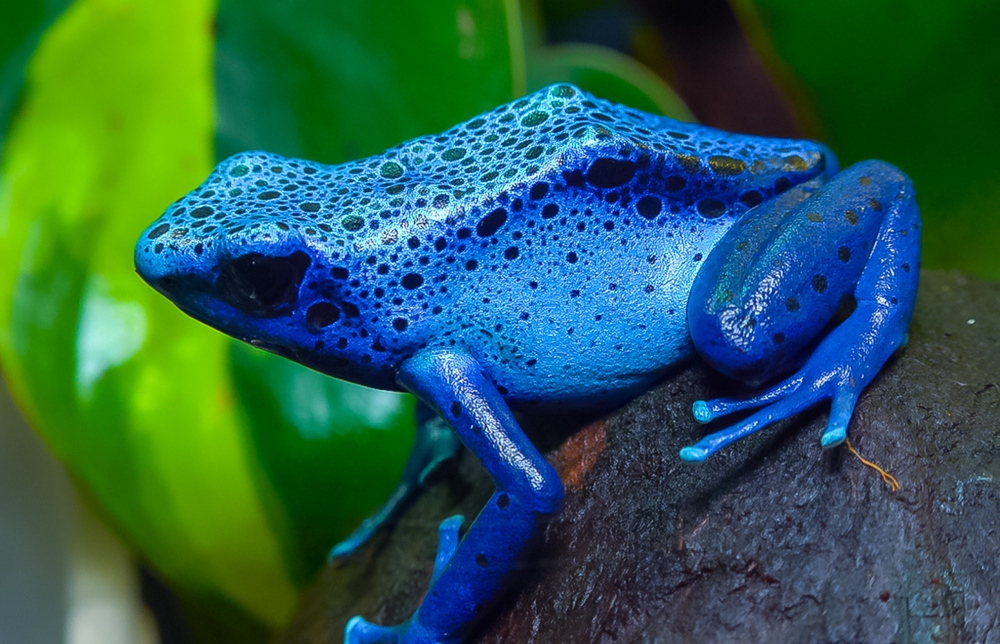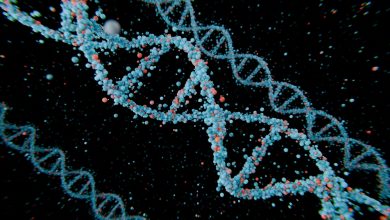10 Surprising Facts About The Colourful Poison Dart Frog

Poison dart frogs, with their strikingly vivid colours and tiny yet powerful presence, are a fascinating subject within the world of amphibians. Found primarily in the tropical rainforests of Central and South America, these frogs are renowned for their remarkable ability to produce toxic secretions as a defence mechanism.
While their dazzling appearance serves as a warning to potential predators, it also captivates scientists and nature enthusiasts alike.
Beyond their aesthetic appeal, poison dart frogs play a crucial role in their ecosystems. They help control insect populations, serve as prey for larger animals, and contribute to the intricate web of biodiversity that supports environmental health and sustainability. Their existence underscores the delicate balance of nature and the importance of preserving their habitats.
This blog aims to delve into the intriguing world of poison dart frogs, uncovering ten surprising facts that highlight their uniqueness and significance.
From their toxic capabilities and reproductive behaviours to their role in indigenous cultures and ongoing conservation efforts, this exploration will offer a comprehensive glimpse into what makes poison dart frogs truly remarkable.
Whether you are a seasoned herpetologist or simply curious about these vibrant creatures, join us as we unravel the secrets of the colourful poison dart frog.
Fact 1: Vibrant Colours as a Warning Signal
Poison dart frogs are a quintessential example of aposematism, a biological phenomenon where bright colours and striking patterns serve to warn potential predators of an organism’s toxicity. This evolutionary strategy is a visual deterrent, signalling that the frog is not worth the risk of predation.
The hues of poison dart frogs are as varied as they are vivid, ranging from brilliant blues and vibrant greens to fiery reds and luminous yellows. These colours can be displayed in distinct patterns, such as spots, stripes, or a combination of both, further enhancing their visibility.
This dazzling display acts as a natural “Do Not Eat” sign, helping these small but potent amphibians avoid becoming a meal and thereby increasing their survival rate.
Fact 2: The Source of Their Toxicity
The toxicity of poison dart frogs is primarily due to the presence of alkaloid toxins in their skin. These potent chemical compounds, which can include batrachotoxins, pumiliotoxins, and epibatidine, are known for their ability to interfere with nerve and muscle function, making them deadly to potential predators.
Interestingly, the source of these alkaloid toxins is closely linked to the frogs’ diet. In the wild, poison dart frogs consume a variety of small arthropods, such as ants, mites, and beetles, which contain these toxic compounds.
The frogs store and secrete these toxins through their skin, establishing their defensive capabilities.It is noteworthy that poison dart frogs raised in captivity, away from their natural diet, do not develop the same level of toxicity, underscoring the critical influence of their diet on their toxic properties.
This unique dietary dependency highlights the intricate relationship between these amphibians and their environment, further exemplifying the complexity of ecological interactions.
Fact 3: Varied Levels of Toxicity
Not all poison dart frogs are created equal when it comes to their toxicity levels. The potency of their toxins can vary significantly across different species.
For instance, the Golden Poison Dart Frog (Phyllobates terribilis) is often hailed as the most toxic of all, with enough poison to potentially kill 10 adult humans. This frog’s extreme toxicity can be attributed to batrachotoxin, a powerful alkaloid that disrupts nerve signals and induces paralysis.
Conversely, other species like the Green and Black Poison Dart Frog (Dendrobates auratus) exhibit lower levels of toxicity, producing toxins that are less potent in comparison.
This variation in toxicity serves as an adaptive trait, offering different species the ability to deter predators based on their specific ecological contexts and availability of toxic prey.
Understanding these disparities highlights the remarkable diversity within poison dart frogs and emphasizes the evolutionary nuances that dictate their survival strategies.
Fact 4: Native Habitats
Poison dart frogs are native to the tropical rainforests of Central and South America, where they thrive in the lush, humid environments that support their diverse and vibrant ecosystem.
These frogs predominantly inhabit countries such as Colombia, Ecuador, Brazil, and Costa Rica, among others. Within these geographical locations, they prefer the dense undergrowth of rainforests, often found near streams or in areas with abundant leaf litter.
The constant availability of moisture is crucial for their skin health and reproductive success, as they require damp conditions to survive and lay their eggs.
Additionally, the rich biodiversity of their habitats ensures a steady supply of the small arthropods they feed on, which in turn supports the development of their toxic properties.
This symbiotic relationship between poison dart frogs and their environment illustrates the critical importance of preserving these natural habitats to ensure their continued survival.
Fact 5: Unique Reproductive Behaviours
Poison dart frogs exhibit a range of unique reproductive behaviours that set them apart from many other amphibian species. During courtship rituals, males often engage in elaborate displays to attract females, which can include vocalizing specific calls, showcasing vibrant colours, and performing physical displays such as jumping or waving.
Once a female is attracted, the pair engages in a carefully choreographed dance before the female selects a suitable site for egg-laying. Parental care is another remarkable aspect of their reproductive strategy.
In many species, males take on the responsibility of guarding the eggs, ensuring they remain moist and protected from predators. Once the eggs hatch into tadpoles, some species exhibit the extraordinary behaviour of tadpole transportation.
The adult frogs, usually the males, carry the tadpoles on their backs to water bodies, such as small pools in bromeliad plants or puddles, where they continue to develop.
This level of parental investment is vital for the survival of the offspring, demonstrating the complex and fascinating strategies poison dart frogs employ to ensure the continuation of their species.
Fact 6: The Role of Poison Dart Frogs in Indigenous Cultures
Poison dart frogs have played a crucial role in the hunting practices and cultural traditions of various indigenous cultures, particularly in the rainforests of Central and South America.
Indigenous tribes, such as the Embera and Choco of Colombia, have long harnessed the potent toxins of these frogs for hunting purposes. By carefully extracting the toxins from the frogs and applying them to the tips of blow darts, hunters created a powerful weapon capable of bringing down prey with remarkable efficiency.
This practice, requiring skill and deep ecological knowledge, exemplifies the resourcefulness and symbiotic relationship between these communities and their environment. Beyond their practical use in hunting, poison dart frogs hold cultural significance, often featuring in folklore and traditional medicine.
Some tribes believe that these frogs possess spiritual qualities, viewing them as symbols of strength and protection. This intertwining of practical and symbolic roles showcases the profound impact poison dart frogs have had on indigenous cultures, underscoring the importance of preserving both the species and the cultural heritage they support.
Fact 7: Conservation Status
The conservation status of poison dart frogs is a growing concern, largely driven by an array of human-induced threats. Deforestation, pollution, and habitat destruction are the primary culprits, significantly reducing the natural habitats these amphibians depend on.
As the rainforests of Central and South America continue to be cleared for agriculture, urbanization, and logging, the delicate ecosystems that poison dart frogs call home are being fragmented and lost.
Additionally, climate change exacerbates these problems by altering precipitation patterns and increasing temperatures, further endangering these sensitive creatures. In response to these threats, numerous conservation efforts and organizations are working tirelessly to protect poison dart frogs and their habitats.
Groups such as the Amphibian Survival Alliance and World Wildlife Fund have launched initiatives aimed at habitat preservation, research, and education.
These efforts include establishing protected areas, restoring degraded habitats, and promoting sustainable land-use practices. By supporting these conservation initiatives, we can help ensure that poison dart frogs continue to thrive in their natural environments, maintaining the intricate balance of their ecosystems.
Fact 8: Captive Care and Pet Trade
Captive care and the pet trade of poison dart frogs bring forth significant legal and ethical considerations, alongside numerous challenges for enthusiasts.
Legally, it’s crucial to recognize that the collection and sale of these amphibians are regulated under various international treaties and national laws to prevent overexploitation and ensure species preservation.
The Convention on International Trade in Endangered Species of Wild Fauna and Flora (CITES) plays a pivotal role in regulating such trade, mandating strict adherence to guidelines for the export and import of these frogs.
Ethically, the capture of wild poison dart frogs raises concerns about the potential impact on wild populations and the preservation of biodiversity. Additionally, the pet trade must consider the well-being of these creatures, as maintaining suitable captive environments mimicking their natural habitats is paramount.
Challenges in captivity include providing consistent humidity, temperature control, and the correct diet to replicate their native conditions, along with managing their toxic properties. Prospective owners must be well-informed and committed, understanding the responsibility that comes with caring for these delicate amphibians to ensure their health and longevity in captivity.
Fact 9: Scientific Research and Discoveries
The vibrant and toxic nature of poison dart frogs has intrigued scientists for decades, leading to numerous studies that explore their potential for medical research. Researchers have discovered that the alkaloids present in the frogs’ skin can serve as a basis for developing novel painkillers and treatments for various medical conditions.
For example, epibatidine, a compound derived from the skin of certain poison dart frog species, has been found to possess analgesic properties far more potent than morphine, without the addictive side effects. Recent scientific studies have focused on synthesizing similar, non-toxic molecules that can be used safely in humans.
Additionally, the unique peptides found in these frogs might offer breakthroughs in cardiovascular and antimicrobial therapies. By continuing to study these remarkable amphibians, scientists aim to unlock new medical treatments that could revolutionize pain management and disease control, highlighting the invaluable role of biodiversity in advancing human health.
Fact 10: Fascinating Facts and Myths
Poison dart frogs are surrounded by a myriad of fascinating facts and myths that add to their enigmatic allure. Among the common myths is the belief that all poison dart frogs are lethal to humans.
In reality, while their skin contains potent toxins, only a handful of species possess enough poison to pose a significant threat to humans, and even then, contact or ingestion is necessary for harmful effects.
Interestingly, the toxicity of these frogs is derived from their diet in the wild, primarily ants and other small invertebrates; frogs raised in captivity without access to these specific food sources typically do not develop the same level of toxicity.
On the trivia front, poison dart frogs exhibit a stunning diversity with over 170 species known, each with its unique pattern and coloration.
Additionally, these small amphibians are vital indicators of environmental health, with their presence signaling a well-balanced ecosystem. These facts, combined with dispelling the myths, offer a greater appreciation for the captivating world of poison dart frogs.
Conclusion
In exploring the “10 Surprising Facts About The Colourful Poison Dart Frog,” we’ve uncovered some truly fascinating aspects of these remarkable amphibians. From their vibrant colours and the potent toxins they produce to their essential role in indigenous cultures, poison dart frogs captivate both scientists and nature enthusiasts alike.
We’ve delved into their diverse species, with over 170 variants each displaying unique patterns, as well as the pivotal role they play as environmental health indicators.
Dispelling myths about their lethality, we’ve learned that only a few species pose significant threats to humans and that their toxicity largely derives from their wild diet.
Final thoughts bring us to the critical importance of poison dart frogs to biodiversity and ongoing conservation efforts. These frogs are not just biological curiosities but key components of their ecosystems, whose presence signals a healthy environment.
The threats they face from habitat destruction, climate change, and the pet trade underscore the necessity for robust conservation strategies.
By supporting and advocating for initiatives aimed at preserving their habitats and regulated pet trade practices, we contribute to the sustainable future of these captivating creatures.
Protecting poison dart frogs ultimately helps maintain the intricate balance of our planet’s biodiversity, ensuring that these and many other species continue to thrive for future generations to admire and study.




